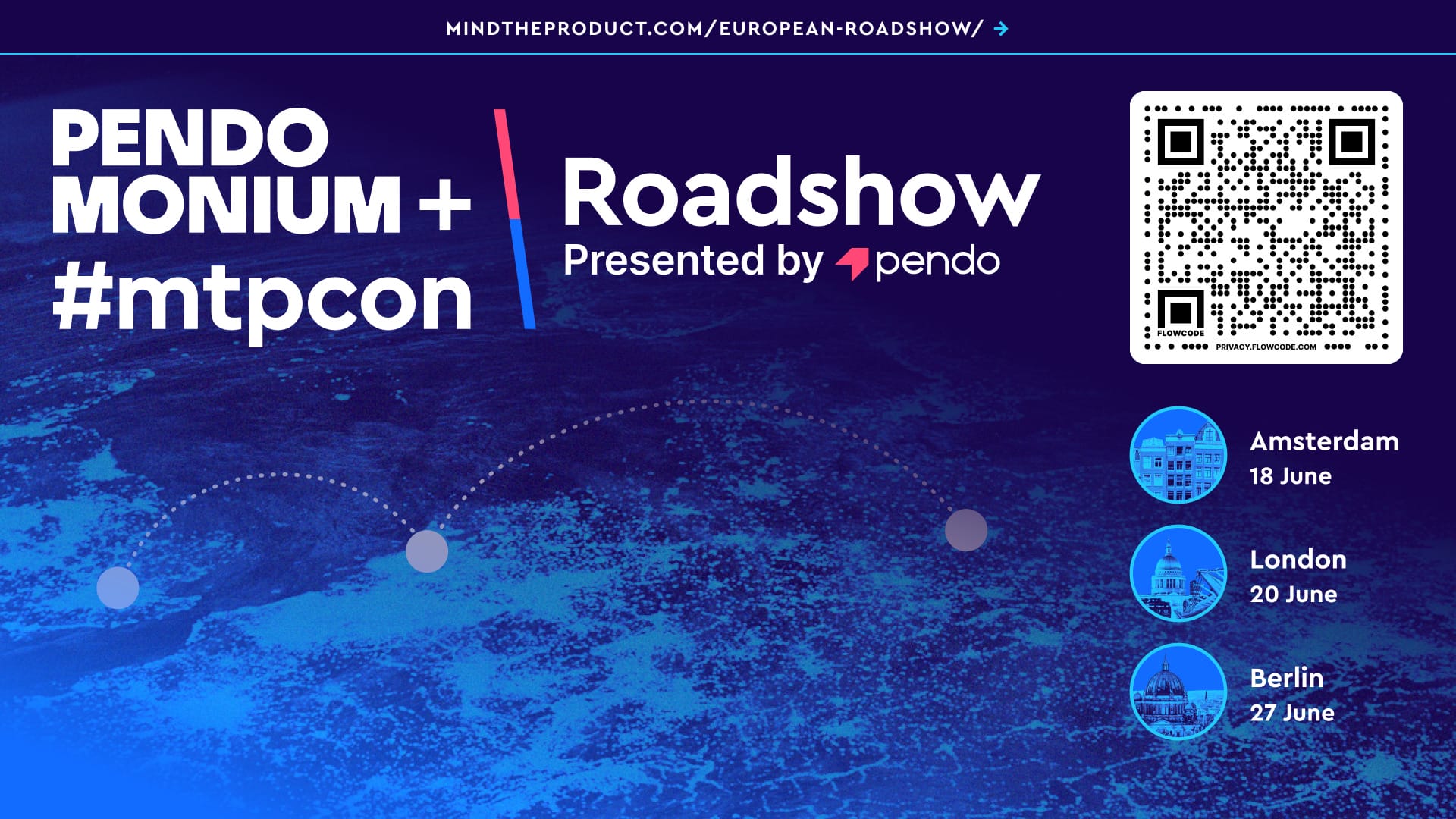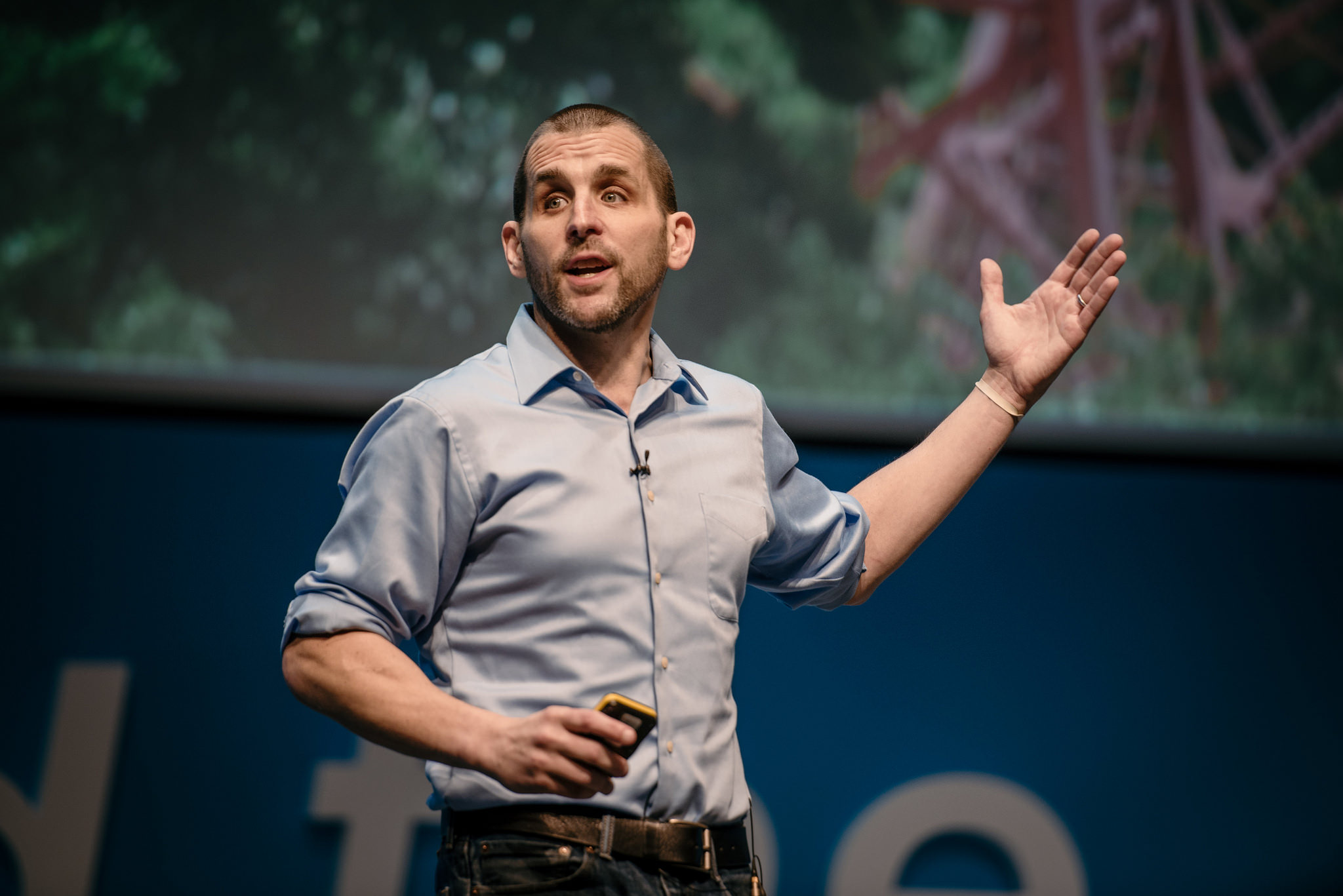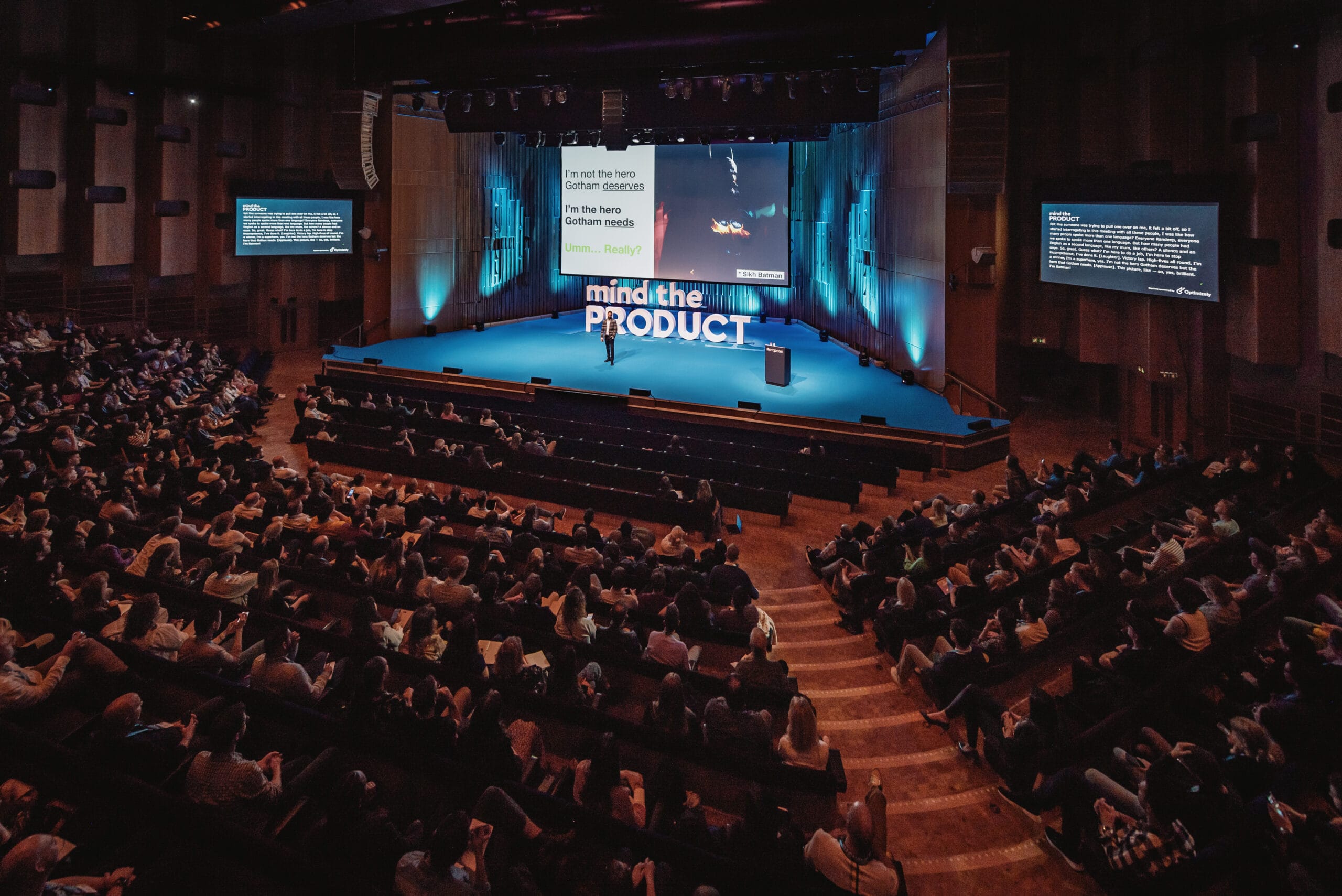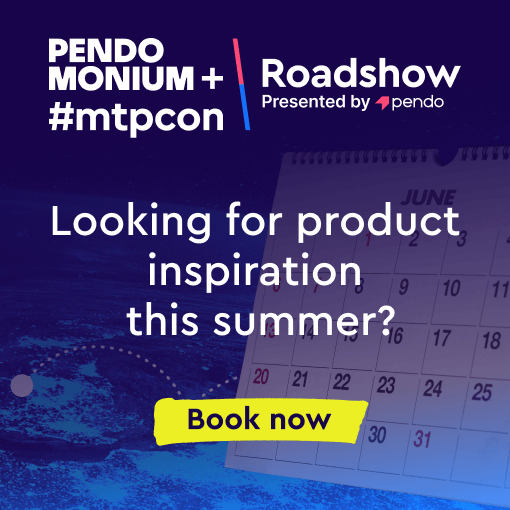This year #mtpcon San Francisco brought together 1,600 product people from 33 countries and 37 states across the US to learn, share, and connect over our craft. After a day of workshops and leadership discussions, the main conference presented 10 amazing speakers who shared their insights and gave the crowd new ideas to think about and new techniques to apply when they got home.

Embrace the Awkward
Kicking off the day with his annual opening remarks, Martin Eriksson reminded us of his 20-plus years of product management credentials before admitting that, despite the success the rest of us see, he still feels like an impostor. Over half the room said they feel the same way and Martin says this is because we are generalists in a specialists’ world. And while this can make us feel like impostors, it can actually be our superpower! We know that we don’t know everything, and that lets us ask the right questions and connect the dots within our teams.
Taking Care of Your Team
Serial author and Stanford lecturer Christina Wodtke started the morning session with an inspiring look at team dynamics, and encouraged us to actively manage our team culture. She walked us through the behaviors of different types of teams (work groups, teams, learning teams, and mindful teams) and gave us ways to level up our team’s effectiveness, regardless of where we currently sit on the ladder. Because at the end of the day, if we don’t take care of our teams, we can’t change the world.

Managing our Cognitive Biases
“This is a room of really smart people,” began Cindy Alvarez of Microsoft. “But it doesn’t really matter because your cognitive biases will mess everything up anyways.” Since we can’t “uncognitive bias” ourselves, we have to work around our biases as we build product. Cindy explained some how some common biases manifest themselves in our research, and then offered alternative ways to approach research to minimize the impact of these biases, by framing questions in different ways. Minimizing our bias allows us to truly understand what our customers need, and lets us strike things off our roadmap that don’t actually need to be there!
Stop Messing up Research
Atlassian’s Leisa Reichelt continued the conversation by asking: “Is bad user research better than no research?” With the trend of “customer obsessed” companies, everyone is talking to users. But it’s not uncommon to make mistakes in our research methods, so we make decisions based on bad information. She walked us through customer interviews, usability testing, and surveys, the common ways that we mess them up, and some better ways to approach them. But more importantly, she had us focus on why we mess up research, and challenged us to really give research its due. She encouraged us to ask our teams one question and hold ourselves accountable: “In the last six weeks, have you personally observed a customer using your product?”
Unlocking Product-Market Fit
Lean Product Playbook author Dan Olsen broke down a concept that tends to be oversimplified – product/market fit. He broke down the layers and said that many product teams spend too much time focused on the top two layers – the solution space. To really find product/market fit, we have to spend more time in the problem space, really understanding what problems our users have and how our value proposition is best placed to solve it. He outlined the Kano Model for mapping your product’s benefits, and gave a framework for evaluating where you want to compete.

Reimagine the Roadmap
“Why do we ship the wrong thing?” asked author and VP of product at Vempathy C. Todd Lombardo. We claim to “build, measure, learn”, but in reality, we “build, ship, build, ship, build, ship”. This phenomenon typically gets attributed to bad roadmaps. C. Todd shared some “letters to roadmaps” that have been written in his workshops, and they clearly show some strong feelings towards roadmapping as it commonly exists today. He encouraged us to rethink how we view roadmaps – not as a list of features and delivery dates, but as a way to communicate our strategy. He outlined the components of a product roadmap, and talked about focusing on themes. He closed by reminding us that product management is not project management – you might finish a project or a sprint, but your product is never done.
Managing Distractions
Behavioral designer Nir Eyal returned to the Mind the Product stage to ask “why are we so distracted these days?”. Is our technology to blame, or is there something deeper going on? When Nir wrote his best-selling book, Hooked, he wanted to help people to build products that were habit-forming in healthy ways. But over the years, distractions have increased, and becoming indistractable is now the superpower we strive for. With distraction and traction on the opposite ends of the spectrum, Nir offered tips on how to be more intentional with how we deal with them. He told us how to manage our internal triggers to distraction, make time for traction, and hack back our external triggers. At the end of the day, distraction is really a symptom of a deeper problem, but it does not happen to us. It is a choice, and we all have the power to fight distraction.
The Product Practitioner’s Oath
Mariah Hay, VP of product at Pluralsight, challenged us to think about ethics in product management. She posited that we have the best jobs in the world – we are problem finders and problem solvers. We also potentially have the most powerful jobs in the world, and if we’re not careful, we can quickly become problem creators. Ethics can be simpler to understand in situations that are life and death, but can be much harder in areas where the consequences aren’t so black and white. The problems we’re creating as an industry for the general public originate from a lack of ethical accountability. Mariah suggested a Product Practitioners Oath, that challenges us to find our blind spots, never weaponize our products, and be 200% accountable for ourselves and those around us.

Improving Innovation
Move The Needle CEO Brant Cooper spoke about the concept of innovation and how we can improve it. He talked about acting like an entrepreneur in the unknown, and using empathy, experimentation, and evidence. We as product managers have already absorbed these things into our work, so how do we improve innovation? Innovation teams are often asked to find breakthrough innovations, but attain the ROI of an existing product. That is not possible. By making some simple fixes to the ways we manage innovation, we can provide space for breakthroughs and propel ourselves toward our real goals.
Building Enduring Products
Benchmark General Partner Sarah Tavel posed the big question for consumer companies: “How do you maximize your chances of building an enduring, consumer product?”. At the core, it comes down to maximizing engagement. Growing users isn’t enough – to get engaged users, you need to grow users who are completing the core action of your product. You then need to retain your users, building your product to create accruing benefits and mounting loss. But to truly build an enduring product, you need to convert your users’ engagement into fuel to power your company forward by creating virtuous loops. When you find the opportunity for virtuous loops, you have to be intentional in maximizing that loop. By building all three levels of engagement, you create the foundation of an enduring product.

How to Find the Product
Making stuff is awesome. Finding bits of the world that are broken and finding ways to fix them is exciting. But many in our industry today don’t get this opportunity. When product designer Tom Coates started in the tech industry 25 years ago (apparently at the age of five, as he insists his age is 30), most everyone was an amateur creator, building from scratch. Today, most people enter the industry building and iterating on someone else’s product, and have the feeling that creating new ideas is something other people do.
Tom ended the day by reminding us that every one of us is capable of creating great ideas. But he also reminded us that while we can all create, ideas are not divine inspiration – they are a lot of hard work. While this may feel disheartening, it is exciting to realize that great ideas are not exclusive to demi-gods or mythical geniuses. He gave us a process to help find the problems we want to solve, and develop our ideas. But remember that this process is the beginning – not the end. Look for the product that opens the most doors, and makes things possible that weren’t possible before. Tom still believes in the future that we can create. Let’s be great. Let’s be good. And let’s have fun!

Thank You!
As we pack up and return to our offices, we say thank you to everyone who made this conference possible. Thank you to our sponsors, our volunteers, our speakers, and most importantly, our audience! This conference is not just about the content on stage – it is about building a community of people who want to build products that people love. And we couldn’t do that without the 1,600 people who came together to share their experiences and learn from each other.
If you missed out this year, don’t worry! Videos of the full talks will be coming to this site over the next few weeks. In the meantime, sign up for our newsletter and follow us on Twitter so you can be the first to know when tickets for next year go on sale!







Comments 0